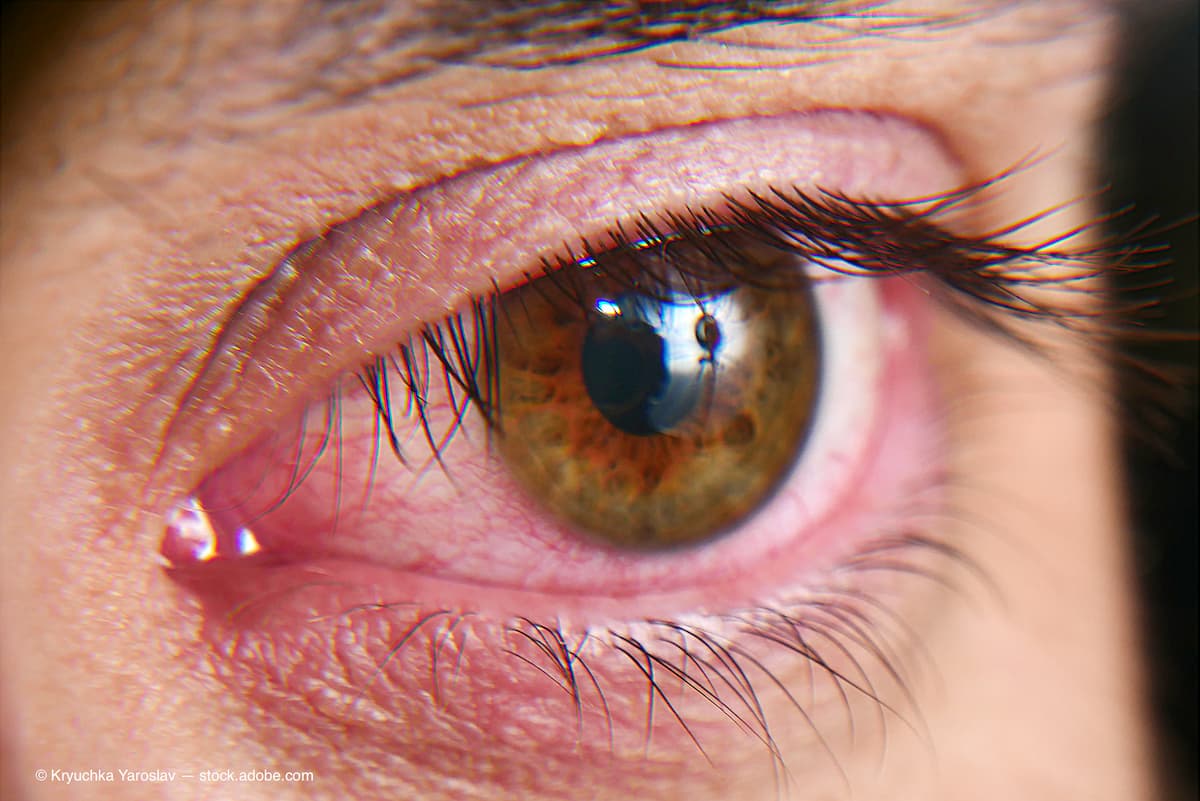Recent study finds high post-COVID-19 infection fever could impact central corneal temperature
Study authors found that central corneal temperature could decrease faster with insufficient recovery time or severe symptoms, indicating a faster evaporation of the tear film.
Image credit: AdobeStock/KryuchkaYaroslav

A recent study from China found that the central corneal temperature of patients who have either insufficient recovery time from COVID-19 infection or who exhibit severe infection symptoms could decrease faster when their eyes are open, compared to those with moderate and low post-COVID-19 fever and no fever.1 Led by Chunbo Wu of the School of Optical Electrical and Computer Engineering, University of Shanghai for Science and Technology in Shanghai, study authors stated that this faster decrease indicates a faster evaporation of the tear film could be due to dry eye disease (DED), although a correlation between DED and COVID-19 infection has not been established.1
“COVID-19 can lead to meibomian gland dysfunction, a temporary disruption in the microbial community of the eye resulting from viral infection, ocular surface viral infection, or the interaction of the virus with the ocular surface, thus triggering an immune-mediated response that exacerbates and disrupts the balance of tear film homeostasis,” the study authors stated. “Wearing face masks for extended periods could be associated with dry eyes. Prolonged eye use and affective interference were also found to aggravate dry eyes during the COVID-19 era. There could be additional factors contributing to this situation.”
The study included 40 participants (80) who recovered from post-COVID-19 fever, with less than 2 weeks between when body temperature returned to normal and the day of examination. Sixteen patients (32 eyes) were enrolled in the study as the control group. All participants underwent an ophthalmic slit lamp examination and ocular thermography between February 2023 and December 2023.1
Based on maximum fever temperature taken by armpit thermometry, patients were then split into a moderate and low post-COVID-19 fever group (22 patients with a maximum fever temperature ≤ 39 °C) and a high post-COVID-19 fever group (18 participants with a maximum fever temperature > 39 °C). In evaluating the relationship between ocular surface temperature and recovery time for those with high fever, with long recovery time being between more than 5 days but less than 14, and short recovery time being 5 days or less. Thermal imaging data was collected via a longwave infrared thermal camera.1
There were no significant differences were observed in upper eyelid temperature (p = 0.177), inner canthus temperature (p = 0.915), outer canthus temperature (p = 0.652), or initial central corneal temperature (p = 0.925). First-second central corneal temperature (1s-CCT), third-second central corneal temperature (3s-CCT), and sixth-second central corneal temperature (6s-CCT) were also measured, withchange in CCT within 1 s, change in CCT within 3 s, and change in CCT within 6 s of the high fever group were significantly greater than those of the control group (p = 0.007, p = 0.005, and p = 0.004, respectively) and M & L fever group (p = 0.008, p = 0.001, and p < 0.001, respectively).1
“It means that when the eyes are opened, the CCT of the high fever group decreased faster than that of the control group and moderate to low fever group,” the study authors said. “This is the most interesting finding of this study. A faster decrease in the CCT indicates faster evaporation of the tear film.”
Reference:
Wu C, Li B, Huang Y, Xu B, Zhuang S, Gu Z. Evaluation of ocular surface temperature in post-COVID-19 patients with different degrees of fever via infrared thermal imaging. Scientific Reports. 2025;(15)2273. https://doi.org/10.1038/s41598-025-86407-y
Newsletter
Want more insights like this? Subscribe to Optometry Times and get clinical pearls and practice tips delivered straight to your inbox.